
|
|
|
Lectures
Day 1 - Secondary structure prediction
Foundations of RNA 2D structure prediction [slides]
Energy models; Free-energy minimization; Partition-function based methods; Statistical sampling; Pseudoknots
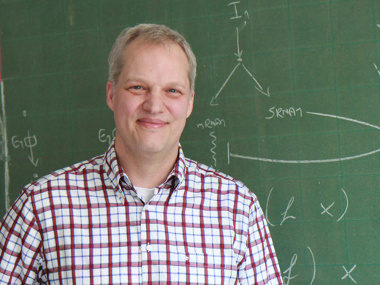
Ivo Hofacker
TBI, University of Vienna, Austria
Since 2010 Pr. Hofacker holds a double professorship at the faculties of Chemistry and Computer Science at University of Vienna. He is currently head of the Research Group Bioinformatics and Computational Biology. Pr. Hofacker's scientific interests fit mostly under the computational biology umbrella. Much of his work focuses on RNA Bioinformatics, the most visible part perhaps being the Vienna RNA Package for prediction and comparison of RNA secondary structures, which his coworkers and himself have developed for over 15 years. In addition his group is interested in systems chemistry problems, such the analysis of combinatorial reaction networks
Advanced thermodynamics-based predictions [slides] [tutorial]
Enzymatic/chemical probing-guided predictions; Basic 2D RNA-RNA interactions
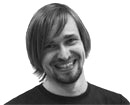
Ronny Lorenz
TBI, University of Vienna, Austria
Ronny Lorenz is a bioinformatician who received his PhD in molecular biology in 2014. He currently holds a University Assistant position at the Department of Theoretical Chemistry in Ivo Hofacker’s group at the University of Vienna, Austria, and is working on various aspects of RNA secondary structure prediction algorithms. Since 2010, he is the leading developer of the ViennaRNA Package. His development of a generic constraints framework for RNA secondary structure prediction methods implemented in the ViennaRNA Package not only enabled a flexible integration of (chemical) structure probing data, such as SHAPE, into prediction algorithms, but also opens a wide range of applications in modeling RNA folding dynamics. His main research interests are algorithmic aspects of RNA secondary structure prediction and the development of novel methods in RNA folding kinetics prediction.
Day 2 - RNA folding kinetics and energy landscapes
RNA kinetics [slides] [tutorial]
Advanced sampling of approximated energy landscapes; Basin hopping graphs; Energy Barrier estimation/Transition rates; Master equation resolution; Co-transcriptional folding.

Ivo Hofacker
TBI, University of Vienna, Austria
Since 2010 Pr. Hofacker holds a double professorship at the faculties of Chemistry and Computer Science at University of Vienna. He is currently head of the Research Group Bioinformatics and Computational Biology. Pr. Hofacker's scientific interests fit mostly under the computational biology umbrella. Much of his work focuses on RNA Bioinformatics, the most visible part perhaps being the Vienna RNA Package for prediction and comparison of RNA secondary structures, which his coworkers and himself have developed for over 15 years. In addition his group is interested in systems chemistry problems, such the analysis of combinatorial reaction networks

Ronny Lorenz
TBI, University of Vienna, Austria
Ronny Lorenz is a bioinformatician who received his PhD in molecular biology in 2014. He currently holds a University Assistant position at the Department of Theoretical Chemistry in Ivo Hofacker’s group at the University of Vienna, Austria, and is working on various aspects of RNA secondary structure prediction algorithms. Since 2010, he is the leading developer of the ViennaRNA Package. His development of a generic constraints framework for RNA secondary structure prediction methods implemented in the ViennaRNA Package not only enabled a flexible integration of (chemical) structure probing data, such as SHAPE, into prediction algorithms, but also opens a wide range of applications in modeling RNA folding dynamics. His main research interests are algorithmic aspects of RNA secondary structure prediction and the development of novel methods in RNA folding kinetics prediction.
Conformational sampling and energy landscapes [slides-part 1] [slides-part 2] [hands-on slides]
Theoretical foundations of kinetic analysis; Sampling conformations and transition paths using robotics-inspired algorithms; Comparison of energy landscapes.

Frederic Cazals
Inria Sophia Antipolis and University Cote d'Azur, France
Frederic Cazals is research director at Inria Sophia-Antipolis, where he leads the Algorithms-Biology-Structure project team, and adjunct professor of applied mathematics at Centrale-Supelec. His research focuses on synergies between theoretical computer science and computational structural biology (CSB), with an emphasis both on ab initio methods (Monte Carlo and energy landscape methods), and machine learning based methods. He is also the architect and co-developer of the Structural Bioinformatics Library (http://sbl.inria.fr), which proposes both low level algorithms and end-user applications in CSB.
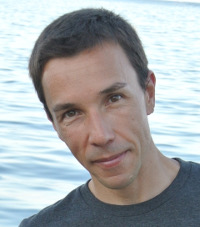
Juan Cortes
CNRS&LAAS, Toulouse, France
Juan Cortés received the engineering degree in control and robotics from the Universidad de Zaragoza (Spain) in 2000. In 2003, he received the Ph.D. degree in automated systems/robotics from the Institut National Polytechnique de Toulouse (France). From 2004, he is CNRS researcher at LAAS (Toulouse, France). His research interest is focused on the development of algorithms for computing and analyzing the motion of complex systems. Applications of these algorithms go beyond robotics. Indeed, he is strongly involved in interdisciplinary research in the areas of structural biology, biotechnology and materials science.
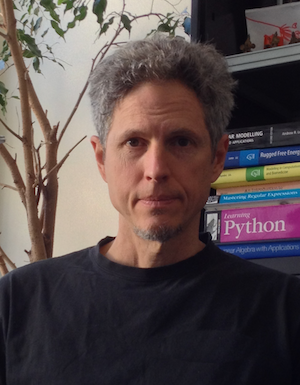
Charles Robert
CNRS &s; Paris-Diderot University, France
C. H. Robert is research director at the French National Center for Scientific Research (CNRS), in the Laboratory for Theoretical Biochemistry, hosted by the Institute for Physical-Chemical Biology (IBPC) in central Paris, a founding institution of the CNRS. His research interests lie in obtaining a better understanding of the structure and dynamics of biological macromolecules and their complexes using theoretical modelling and numerical simulations. These approaches are principally directed towards proteins, but have included modelling the structure and dynamics of DNA and chromatin fibers.
Day 3 - RNA design
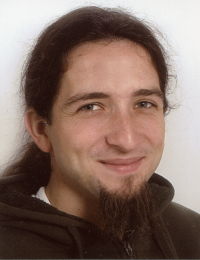
RNA design in theory and practice [slides] [tutorial] [hands-on files]
Inverse folding; Ensemble defect optimization; Sequence constraints; mRNA design; Programmatically-switching molecules; Design of RNA sensors.
Sven Findeiss
University of Leipzig, Germany
Sven Findeiß is a researcher in Peter Stadler's group at University Leipzig (Germany) mainly enhancing RNA design principles and developing novel ideas by making use of available software to model thermodynamic and kinetic folding. Being one of the FET young explorers, Sven successfully raised EU funding for the RiboNets project during his employment in the reknown computational biology group of Ivo L. Hofacker at the University of Vienna (Austria). The RNAsketch framework to de novo design multi-state RNA sequences is one of the main contributions of Sven and colleagues. During his PhD studies, Sven worked on transcriptome and proteome analysis, where he graduated in bioinformatics at the University Leipzig (Germany) in 2011.

Stefan Hammer
University of Leipzig, Germany
Stefan Hammer currently is a PostDoc researcher in the group of Peter Stadler at University Leipzig. He received his PhD in molecular biology at the Bioinformatics and Computational Biology/Theoretical Biochemistry research group in Vienna after studying Genetics and Microbiology at the University of Vienna. His main research interest lies in designing functional RNA molecules for synthetic biology applications. Therefore, he focuses on connecting bioinformatics and wet-lab such that the whole design approach from model generation, computational design to experimental verification and characterization of the obtained candidates can be advanced.
Day 4 - Comparative methods for RNA structure analysis

Comparative methods for structure analysis [slides] [hands-on files]
Information-based methods; Simultaneous alignment/folding of homologs; Covariance models; Genome-wide screens; Comparative modeling; Structural indexing and clustering methods; Comparative RNA-RNA interactions; Significance of evolutionary information (info derived from comparative analysis).
Sebastian Will
TBI, University of Vienna, Austria
Sebastian Will is a researcher with Ivo Hofacker (TBI, University of Vienna) after being researcher in the group of Peter Stadler (Bioinformatics, University of Leipzig), 'Akademischer Rat' in Rolf Backofen's group (Bioinformatics, University of Freiburg), post-doc with Bonnie Berger (CSAIL, MIT; DFG scholarship), and Math instructor (Math department, MIT, Cambridge, MA). His scientific interests focus on algorithmic Bioinformatics, mostly the Bioinformatics of RNA, where he contributed to RNA interaction, RNA kinetics, multi-target RNA design, pseudoknot prediction, and structure-based comparison and clustering of RNAs. Based on his algorithmic work, he developed and maintains several robust software tools; most prominently, the widely used RNA alignment tool package LocARNA.
Day 5 - 3D RNA modeling and RNA-protein interactions

Coarse-grained molecular dynamics for RNA [slides] [hands-on files]
3D prediction methods; RNA force fields and simulation; 3D structural analysis.
Samuela Pasquali
Faculté de Pharmacie, Université Paris-Descartes, France
Samuela Pasquali is a physics professor at the School of pharmacy and biological sciences of Paris Descartes Univeristy after being a lecturer in the Biology department of Paris Diderot University. She holds a pH.D. in theoretical statistical physics from New York University. Her research focuses on the folding of biopolymers, and on RNA in particular, from a physical perspective through modeling. She develops a coarse-grained model for nucleic acids to perform simulations to study the large conformational changes of which the molecule undergoes. Information extracted from these simulation is typically complemented by finer resolution atomistic simulations. At Paris Descartes she joined and experimental biophysics lab and her work started focusing on how to efficiently couple simulation and experimental data to model large non-coding RNAs.

Predicting RNA-protein interactions [slides] [tutorial] [hands-on files]
Gradient-descent based methods; Macro-molecular docking; RNA-protein interactions prediction.
Isaure Chauvot de Beauchene
CNRS&LORIA, University of Lorraine, France
Isaure Chauvot de Beauchene obtained a PhD degree in molecular modeling in 2013 at ENS-Cachan, and is since 2016 a CNRS researcher in the CAPSID team of David Ritchie at the informatics lab LORIA (CNRS - INRIA - Lorraine University) in Nancy. Her research area is the development of computational tools for the 3D modeling of macro-molecular assemblies (i.e. docking), with a particular focus on highly flexible RNA bound to proteins. She also apply her tools to protein-protein/DNA/glycans complexes, in collaboration with several teams in experimental biology. Since her Post-Doc in the Zacharias group, she is a contributor to the ATTRACT docking engine.
Genomic context
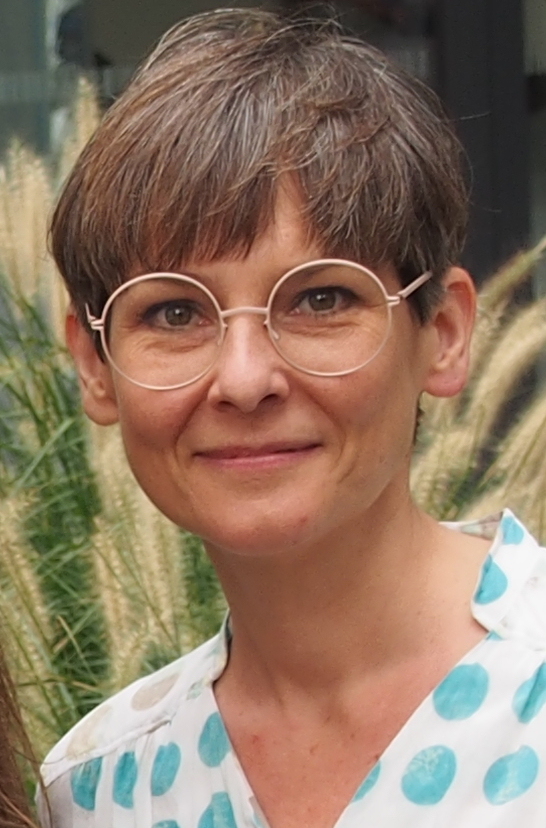
RNA structure: Why it actually matters to biology!
Andrea Tanzer
Department of Theoretical Chemistry, TBI, University of Vienna
Andrea is analysing non-coding RNAs and RNA structure elements in eukaryote genomes. Starting off with finding miRNAs and descibing their evolution and expression in cell differentiation, she moved on to transcriptomics and joined the GENCODE team of the ENCODE project during her PostDoc time at Roderic Guigo's lab at the CRG in Barcelona. Currently she is an independent researcher and lecturer at the TBI, University of Vienna, where she combines transcriptomics with RNA structure prediction to analyse RNA-based molecular mechanisms. With her team she develops methods for efficient folding of medium-sized RNA transcripts. A biologist by training, she would descibe her bioinformatic studies as "Computational Molecular Biology"

